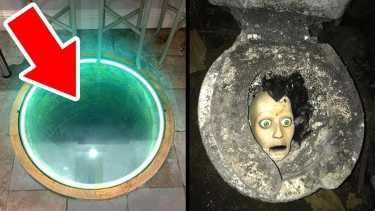Mysteries Discovered in the Wilderness
Let's check out some mysteries discovered in the wilderness!
MysteriesDespite technological advances, there are still corners of the world that we haven’t explored at all, and out in the wild, there are mysteries just waiting to be discovered.
From monsters hiding in the woods, to ancient cities lost in the Amazon rainforest, get ready to venture into the wilderness and explore some mysterious discoveries that will blow your mind or keep you up at night.
Angikuni Lake
Hockey, Maple Syrup, good manners, and poutine are some of the things to love about Canada. However, when you’re busy drooling over fries and gravy, it’s easy to forget that much of Canada is actually miles and miles of deadly frozen wilderness.
When you’re alone in the tundra, it’s easy to go a little crazy, and back in 1930, a fur trapper called Joe Labelle stumbled across something that made him think he was losing his mind. Joe was out trapping around Angikuni Lake in Nunavut, Canada’s northernmost territory.

Nunavut is Canada’s largest territory, but it’s also its least populated, with only 39,000 people occupying the area’s harsh and deadly climate. While out searching for pelts Joe came across a small Inuit camp by the water.
The campfires were still smoldering, and pots of stew sat on top of the flames. It was seemingly dinnertime at the Angikuni camp, yet when Joe searched the settlement, there was nobody around. He found empty tents, half-eaten bowls of food and an unfinished shirt, needles still poking out of the fabric.
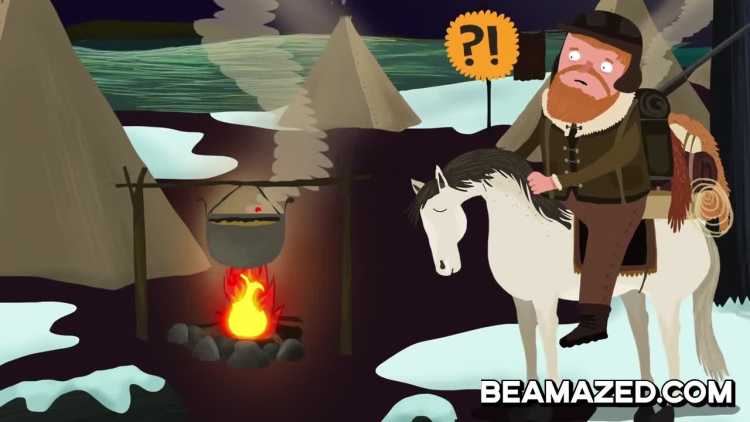
The fires and food meant the villagers had been there recently but there were no footprints in the snow leaving the camp. They had all vanished.
As Joe continued to explore, he was left in utter disbelief as he discovered that every grave in the settlement had been opened and emptied, the headstones neatly stacked beside the graves. Something very sinister had clearly happened at Angikuni Lake.

Horrified, Joe fled across the Wilderness, trekking over Ice and Snow to reach the closest civilization. He persuaded the local police to set off in search of the villagers, but they were never found, their fate remaining a mystery to this day.
It’s possible that the villagers left willingly, their footprints simply covered up by snowfall, but then snowfall would’ve surely dampened the campfires too. And what about the graves? With so many questions unanswered, you can certainly forgive Joe Labelle for not wanting to hang around Angikuni, alone in the wilderness, for long.
Mys-trees
If you ever find yourself in the middle of the Crooked Forest in Poland, you might just find out how the forest got its name: a grove of pine trees with a very unnatural bend at their base. Nobody knows for sure why the trees have grown like this, and spookily, most of the trees bend directly north almost like they’re pointing at something.
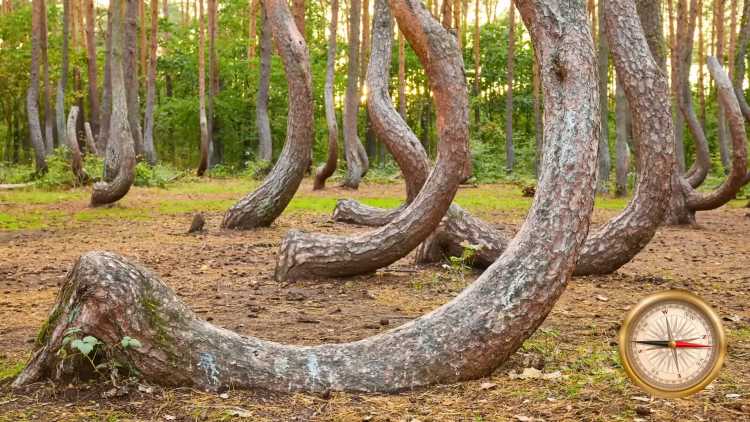
Scientists have determined that the trees were planted in the 1930’s, and they were 7-10 years old when a mysterious force caused their trunks to curve.
Some folks theorize the area has a uniquely strong gravitational field, pulling the trunks down to the ground. But there’s no scientific evidence for this, and the phenomenon hasn’t been observed anywhere else on earth.
Others believe tanks in World War 2 drove over the trees when they were saplings, bending them out of shape, only for them to continue growing skyward.
And of course, others believe the anomaly can only be the result of aliens. I’m not sure why Aliens would want to bend a bunch of trees in Poland though, unless it’s just a case of extra-terrestrial arts and crafts.
Interestingly, there are cases of humans bending trees on purpose. Native American tribes used to bend ‘trail trees’ to mark their roads and paths, like an old version of a sign above the highway.
The trees were bent at their base, before growing straight up towards the sun, resulting in their distinctive shape. So, some theorize that the drunken trees in Poland’s Crooked Forest could likewise be manmade.
Curved wood used to be an important material for building ships, and the crooked forest could’ve been used to give shipbuilders a supply of curved wood without having to bend it after harvesting. Then again, if the trees were grown to build boats, why were they never cut down?
Le Loyon
Bigfoot, Chupacabra, the Abominable Snowman, the wilderness is a hotbed for tales of cryptids and creatures. The wilderness around a small Swiss village called Maules is no different, having been plagued by reports of a cryptid for years, known as Le Loyon.
Eerie local reports describe the entity as a tall, imposing, humanlike figure, occasionally glimpsed moving through the woods in a boiler suit, a dark cloak, and an old-fashioned gas mask, with no real direction or purpose.
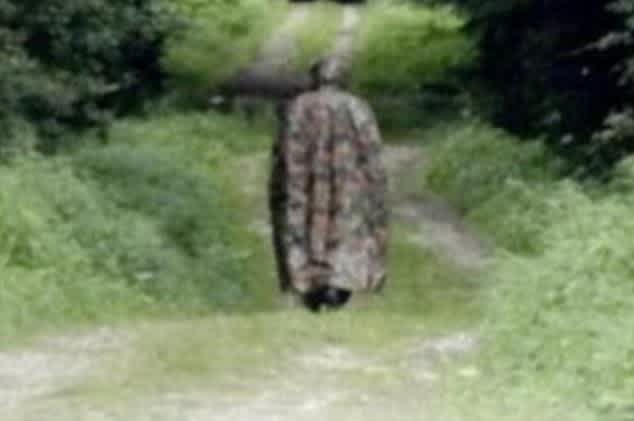
There’s even footage online of people claiming to capture the monster, although the fake-looking camcorder effect and shaky cinematography makes me think it’s probably just a group of kids trying to shoot their own low-budget horror film.
Regardless, when he allegedly appears, Le Loyon always wears the same outfit, although he was once spotted clutching a bouquet of flowers. What a romantic, Mrs Loyon is a lucky lady! Police have searched for Loyon for years, but they’ve never been able to find him, the monster only appearing to unsuspecting walkers, deep in the woods.
More cynical people suspect that Le Loyon is just a guy who likes dressing up and going for long walks, but as the stories of Le Loyon turn from fact to legend, some locals believe that underneath that boiler suit, the monster might not be human at all.
Ancient Aliens?
Cave paintings can give us an amazing insight into the lives of our ancestors, usually depicting handprints, animals and people hunting, pretty standard caveman stuff. Sometimes, however, a cave painting will come along that’s more puzzling, including pictures of strange shapes, mutant animals and humanoid figures.

While perplexing works of prehistoric art like these may be the result of ancestors with over-active imaginations, get your tinfoil hats at the ready, because some equally imaginative theorists of the modern age believe these paintings are proof of extra-terrestrials visiting the ancient earth.
One type of cave art that’s frequently cited by conspiracy theorists are depictions of the Wandjina in Australia. The Wandjina are a sacred part of Aboriginal culture; cloud and rain spirits that, in Aboriginal mythology, were instrumental in sculpting the Australian landscape and its inhabitants.
Ancient paintings of the Wandjina are found around The Kimberly, a wild, isolated part of Australia’s coastline, and legends state that these powerful spirits had the ability to ‘lightning strike’ people that broke the law, as well as transform themselves into clouds and disappear into the sky.
Suggestions that the Wandjina were advanced, space-faring aliens have been criticized for undermining the Aboriginal’s important cultural beliefs, but depictions of the Wandjina are strikingly similar to the appearances of aliens in modern media.
Of course, ancient myths and folklore aren’t always meant to be taken literally, and the Wandjina were likely using metaphorical interpretations of natural forces; like thunderstorms, lightning strikes and floods.
Still, these conspiracy theories are spurred on by other pieces of cave art found all over the world. Cave markings found in Chhattisgarh, India were near-identical to modern depictions of blubous-headed Aliens, and in the US, ‘The Head of Sinbad’ is sometimes used as an example of Native American art that depicts an ‘alien figure.’

This evidence should, of course, be taken with a pinch of salt, as the artworks could easily be abstract depictions of humans. Even when modern folks try to draw humans, it rarely works out photo-realistically.
The Impossible Colors
We’ve already explored some of the terrifying things that people have found while hiking, but not all mysteries have to be scary.
In 2018, a Redditor went for a walk in the woods with their girlfriend and found something that brightened up their day: a body of water in the swamp that appeared to be filled to the brim with rainbows.
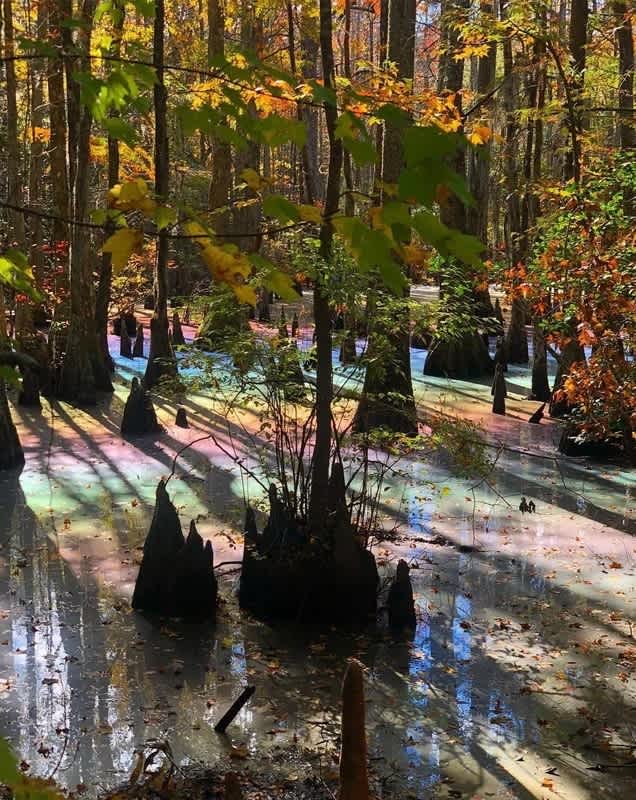
Some commenters thought the colors might’ve been the result of a giant colorful bath bomb or an oil spill. Thankfully, the explanation’s a bit more natural.
As the cones on the swamp’s cypress trees fall down, their natural oils gather atop the water, refracting light, which is then reflected back to the eye by the water below, shifting the light’s wavelength to the multi-colored spectacle you see. The rainbow waters are totally safe to swim in.
Hole in the Woods
Sometimes mysteries discovered in the wilderness totally defy natural explanations. That’s why users on twitter were left scratching their heads when this image started to circulate online.
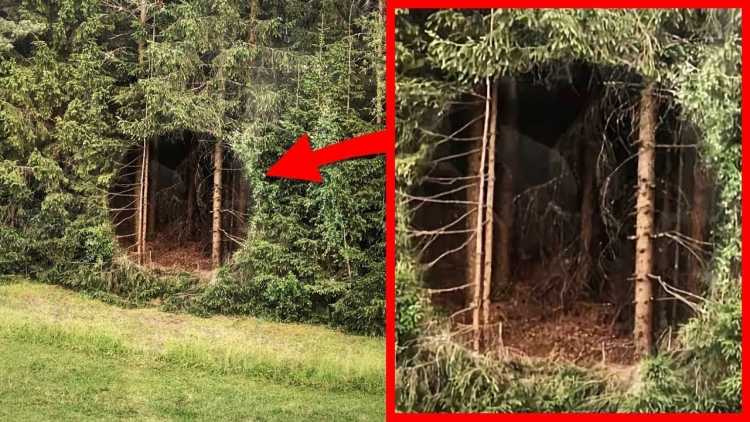
Internet sleuths desperately tried to figure out what might’ve caused the hole and one twitter user ominously stated ‘the hole isn’t scary… I’m afraid of what created it.’
However, an explanation eventually came, and the hole wasn’t a portal to Narnia, or the work of a monster with a passion for pruning hedges.
It was actually created by Antti Laitinen, a Swedish visual artist who largely works with nature. It was a part of a project called ‘Broken Landscape’ that involved cutting segments out of trees to create eerie, unnatural scenes.
Antti doesn’t just work in the woods though. His other works include a painting made out of his own sweat and attempting to move an entire lake with just two buckets. Both works of art had similar results: puddles, and not a whole lot more.
Wilderness Wanderer
Police Officer Helenice Vidigal must’ve seen lots of terrifying things while patrolling round Brazil’s stretch of the Amazon Rainforest, which she was assigned to in the 2010s.
But the strangest thing she ever saw wasn’t a venomous snake or a jaguar, it was a skinny, bare-foot Canadian Man walking down a dirt road, headed towards the depths of the jungle. When she approached the man, she discovered he didn’t have a passport, and he didn’t speak a word of Portuguese or Spanish. She had no idea how he got there.
Meanwhile in Toronto, Stefan Pilipa was going about his life, his days plagued by thoughts of his brother Anton, who had gone missing 5 years before in 2012. His disappearance had left Stefan with so many questions, where had Anton gone? Why had he left and was he even still alive?
All those questions were answered when Stefan received a call from a certain Brazilian police officer. It turns out that Anton had traveled over 6,000 miles and 10 different countries on his journey to South America.
Nobody knows how he crossed the borders without a passport, and he undertook much of the journey barefoot, carrying little more than the clothes on his back. Most dating profiles say we like long, romantic walks but that’s just insane.
So what inspired the walk? Well, Anton wanted to visit the National Library of Buenos Aires in Argentina, and with a history of mental illness, it seemed Anton became totally consumed by the idea of heading there on foot, at all costs.

After several years of traveling Anton finally made it to his destination only to be turned away from the library because he didn’t have an ID!
So, he turned around and began his long journey home, the journey in which he’d eventually encounter officer Vidigal, leading him to be reunited with his brother without having to walk the full two continents. Hopefully, before Anton departs on his next adventure, he’ll leave a note!
Mystery Line
Do you ever feel like your eyes are playing tricks on you? Well, let me introduce you to this spot in Tennessee, a real-life optical illusion. The woodland looks like it’s been Photoshopped, with the perfect line across the trees reaching as far as the eye can see.

Believe it or not, this isn’t edited at all; and the trees haven’t been painted by our friend Antti Laitinen. Instead, this location, known as the Sinking Pond, is a vernal pool; a body of water that fills up with rainfall from Winter to spring, and then completely dries during the summer.
In the Sinking Pond, the trees are partially submerged for most of the year. When the pond sinks into the ground during dry season, the water-logged bottom-halves of the trees are exposed, all at the exact same level.
I can just imagine the confused local frog that wakes up on the dry forest floor one spring morning each year, shouting to his wife, “dammit Florence – did you pull the plug out of the bath-tub again?!”
Swamp Ghost
In 1972, a group of Australian soldiers found a ghost, deep in the swamps of Papua New Guinea. This ghost wasn’t a Victorian Lady in a white dress, or a little girl climbing out of a TV screen; it was the remains of a World War 2 era airplane, known as the ‘Swamp Ghost.’
The machine guns were still loaded, a thermos was filled with rotten coffee, and an ashtray still held the ends of half smoked cigarette butts. The plane was oddly intact, just resting on the swamp floor but, initially, the fate of the crew was a total mystery.
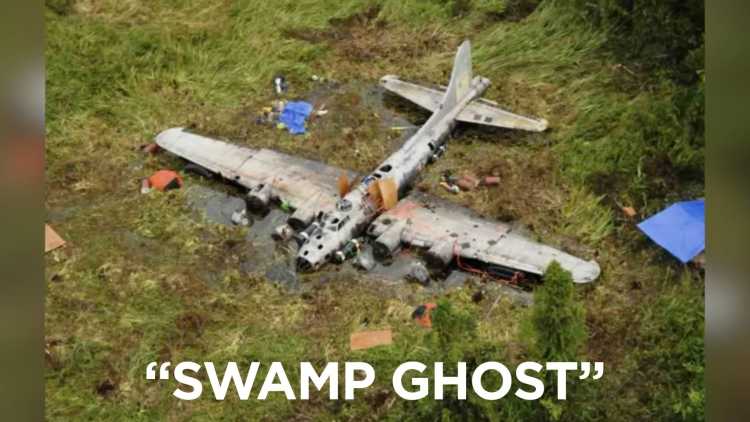
However, as awareness of the plane spread, the Swamp Ghost’s crew were tracked down. Journalists managed to interview the plane’s engineer Clarence LeMieux, now a 90-year-old veteran living in Spokane, Washington.
He revealed that before the crash, the plane ran into ‘three or four’ tornadoes, had a hole shot in its right wing by Japanese warplanes, and eventually ran out of fuel, forcing the crew to ditch the plane in the middle of the jungle.
Incredibly, the men all survived the crash-landing, trekked through the jungle for days in search of help. The men came close to death, and during their journey, two of them started hallucinating, exclaiming that they could see an American mess hall through the trees.
Luckily, the men were eventually rescued by a local tribe, and escaped the jungle on canoes, but the shell of the Swamp Ghost was left behind, waiting to be found almost 30 years later.
Frozen In Ice
Antarctica is a barren wasteland of ice and snow. It’s the fifth largest continent in the world, but in the winter months, only 1,000 people live there, for one main reason: it’s just so cold. With temperatures as low as -126 degrees Fahrenheit, and wind speeds up to 199 miles per hour, the people who do live on Antarctica are there for scientific research, traveling across the continent to make new discoveries and meet some baby penguins.
With how desolate it seems, imagine the surprise when a group of researchers on Cape Evans came across a box full of 22 undeveloped, film photographs, buried in a solid block of ice. The researchers quickly cleaned and developed the photographs, and what they found was amazing.
It wasn’t a polar bear taking a selfie; it was a set of perfectly preserved images from an Antarctic expedition over 100 years ago.
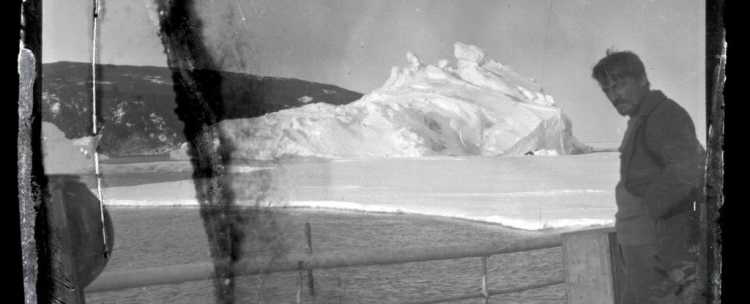
Initially, they didn’t know who left the photos or why, but it’s now believed the photos are of the Aurora, a ship that explored the arctic between 1914 and 1917. During their travels, the explorers’ main ships sunk, leaving them stranded on the ice during a blizzard.
These adventurers were then forced to paddle in lifeboats for 720 miles over a stormy ocean to reach the safety of the nearest island in South Georgia. Miraculously, their endeavor was a success, but their holiday photos were lost until 2013.

Blue Woods
When you picture tree trunks, you probably imagine something brown, or possibly white. Bright blue trees, meanwhile, might sound like something from an alien planet, but people have been discovering these unnatural looking plants in the wilderness all over the world and sharing them online.
Shared examples have included trees with blue-dashed trunks, and sticks that are filled with the blue stuff.
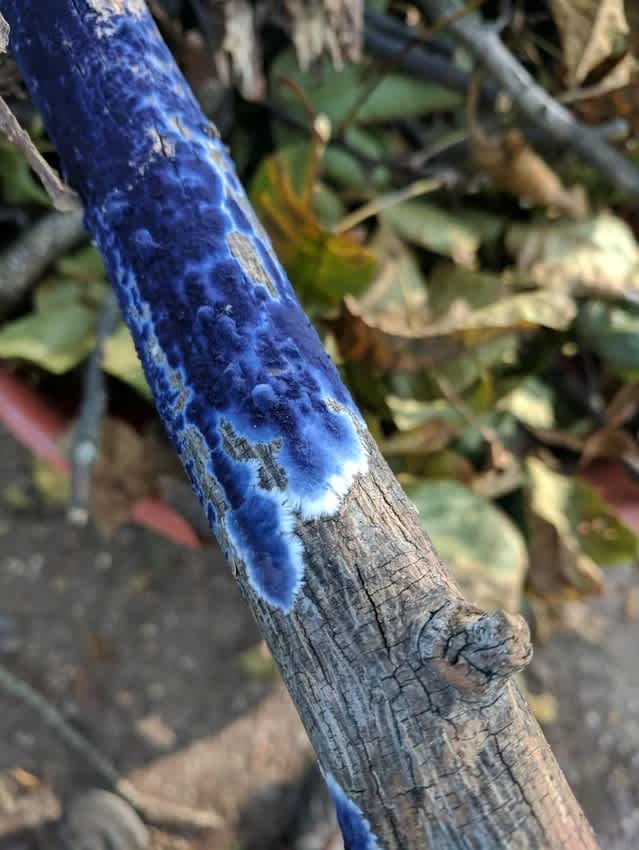
This curious coloration left people scratching their heads, but the mystery was solved when Mycologists came to the rescue. Mycology is the study of fungi, and it turns out, the blue branches are the result of a fungus called ‘Terana Caerulea,’ also known as the ‘cobalt crust,’ or ‘velvet blue spread.’
Although the branches might look like candy, they aren’t blue raspberry flavored, though the fungi aren’t particularly harmful to the trees either. It has over 100 species capable of making woods a little bit blue.
People of the Forest
When going for a hike on your own, there’s nothing worse than realizing that you aren’t alone anymore. A shadow in the distance, a figure watching you through the trees, it’s all shudder worthy.
But, in a surprising number of cases, those humanoid silhouettes on your periphery may turn out to be, of all things, statues, as countless posts shared online have proven.
One Redditor, for example, found a strange box in the woods, assuming that the object had crash landed from outer-space; though the door on the side implies a more terrestrial, albeit intricately constructed, secret-forest-hideout purpose.
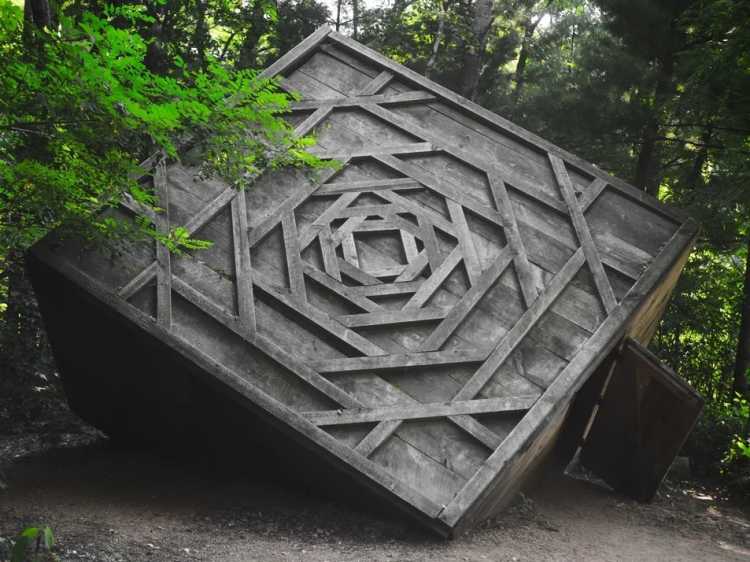
Another web user discovered a beautiful wooden archway, likely constructed by intricately bending and restricting the trees’ growth, and they rightfully joked that it looked like a portal to another dimension.
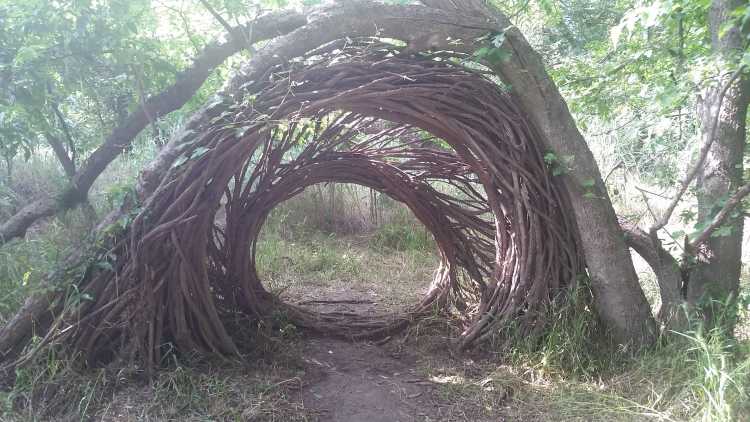
Sometimes, it’s hard to tell whether forest finds are manmade or not. One redditor’s heart sunk when they discovered this monster in the woods during a hike. People online were left scratching their heads, trying to figure out whether it was a natural tree, a piece of artwork, or an actual woodland Demon.
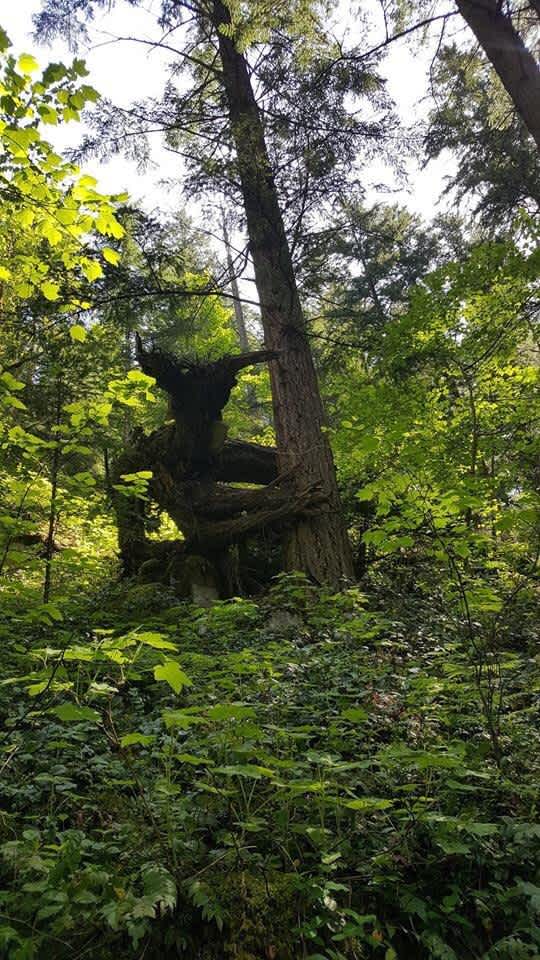
One of the scariest woodland instillations are Rob Mulholland’s mirror sculptures, placed all over the Scottish wilderness. The statues reflect the woods around them, completely camouflaged until you get up close. Terrifying.
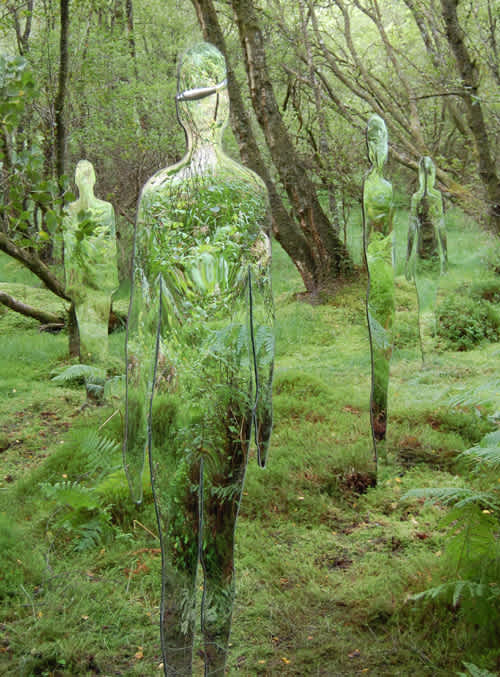
The ghostly figures are intended to explore humanity’s relationship with nature, but if I stumbled across one, I’d probably just explore how quickly I could run away.
But I’d rather have the mirror people over for dinner than get lost in this trail in Atlanta, where people have found eerie hybrids of dolls and technology. And there are yet more forest humanoids to be found around the world. These haunting wood sculptures by Nagato Iwasaki, are placed in woods all over Japan.
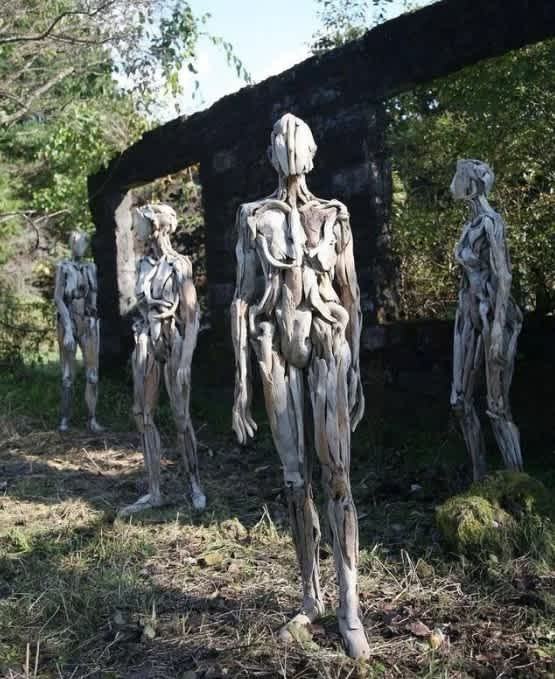
And if you travel to De Schorre Park forest in Belgium, you’ll find yourself transported to a fairy tale, suddenly surrounded by wooden sculptures of trolls and giants. It turns out that these mysterious statues are the work of Thomas Dambo, an artist who creates art out of recycled wood and other discarded materials.
Dambo created the sculptures to encourage people to explore nature, and he’s now one of the most prominent recycling artists in the world, getting commissions to build more wooden trolls all over the globe, truly proving that ‘one man’s trash is another man’s treasure.’
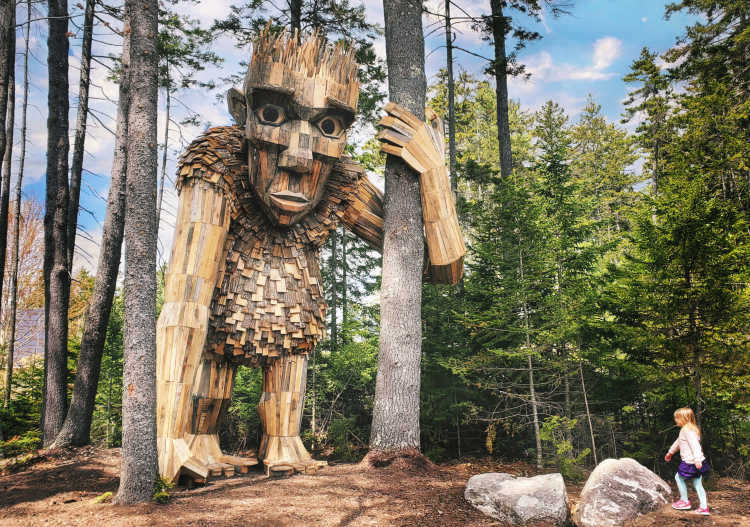
Lost City of the Monkey God
From Machu Picchu to Teotihuacan in Mexico, the discovery of ancient cities can teach us a lot about the civilizations that came before us.
They’re home to fascinating legends, abandoned temples, and beautiful artefacts, like this mask, found intricately carved out of the mineral serpentine inside Teotihuacan’s pyramid, for use in mysterious rituals, long forgotten.
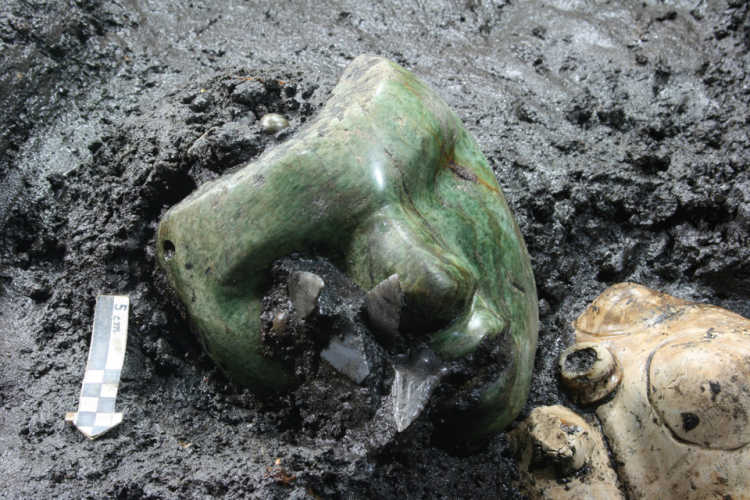
Deep in the Honduran Jungle, though, there’s a legend of a lost city so wealthy that the inhabitants used to eat their food off of ‘plates of gold.’
This civilization is known by two names: La Ciudad Blanca, The White City, or The City of the Monkey God. Stories of the city have circulated since the 1500s, and several explorers have set out in search of the ruins. Some came back with bags full of treasure, while others never returned at all.
In 2015, a group of adventurers set off into the rainforest, battling through a region known for its deadly snakes, jaguars and violent drug cartels. Against all odds, these adventurers discovered a city in the jungle, the ancient ruins of which had been overrun by vegetation.
They found pyramids, temples and sculptures. The art depicted jaguars, ancient villagers and as per the city’s name, monkeys. Nobody knows why the city was abandoned, but a local legend says that the villagers fled after being cursed by a disease brought on by the Monkey God.

This was thought to be a myth, but the explorers soon started to feel unwell during their expedition. They discovered that they had contracted a flesh-eating parasite called Leishmaniasis and were forced to flee the ancient city to get medical attention. The explorers have since stated their desire to return to the city and uncover its mysteries, but they’re yet to return.
However, the disease they contracted could give a scientific explanation for the abandonment of the city, if the parasites, carried in certain species of fly, were present back when the city fell. For now, though, the jungle city remains cloaked in mystery.
Isle Of Horrors
Up next, we have one of the strangest true-crime stories of all time. A mystery featuring; an isolated island, a violent criminal, and a small colony of Wallabies. The setting? Loch Lomond, Scotland.
Back in the 1940’s, all 86 acres of the isolated Inchconnachan Island in Loch Lomond were owned by the Countess of Arran, an eccentric who was once known as ‘The Fastest Granny on Water’ due to her love of speedy motorboats. This quirky countess had a love for exotic animals too, populating Inchconnachan with Wallabies after World War II.
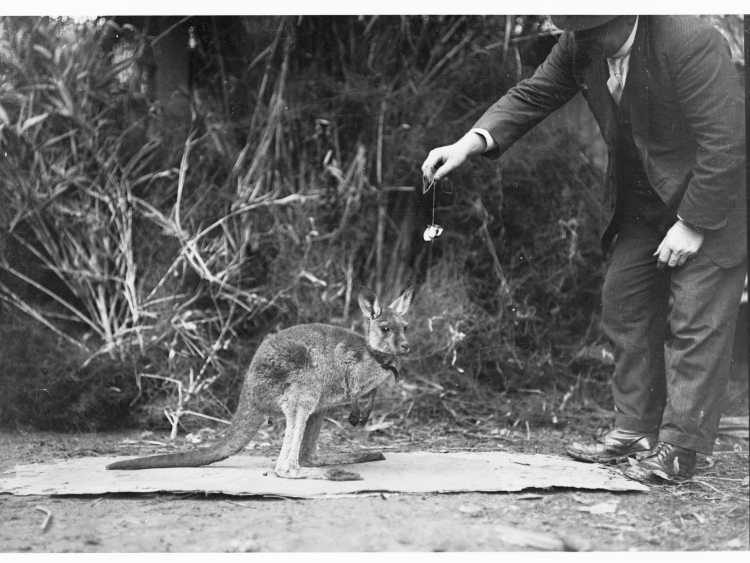
Today, there are around 60 Wallabies living on the Island, and explorers flock to its shores to snap photos of the out-of-place Australian wildlife. But not all of these visitors have good intentions. This became apparent in 2017, when a truly bizarre, and slightly disturbing, mystery cast a dark shadow upon the island.
Visitors arrived on Inchconnachan’s shores to discover that a large number of the Wallabies had been killed, their bodies left all over the island. The killer must’ve come in the night, committed the crime and vanished, their identity remaining a mystery.
While the criminal mastermind is unknown, there is a clear motive for the crime. The wallabies are technically an invasive species, their arrival altering the ecosystem and taking food away from the native Capercaillie birds, driving their numbers down to dangerous levels.

This angers some locals, and there have been demands that the government cull the wallabies to protect the Island’s ecosystem. But with no significant action taken to date, it seems some wallaby-hating vigilante took justice into their own hands. But mysterious culprit aside; invasive or not, who’d want to cull a little wallaby?


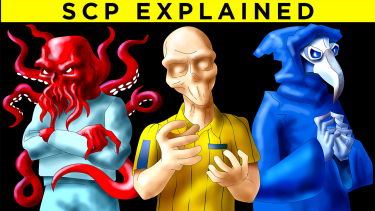



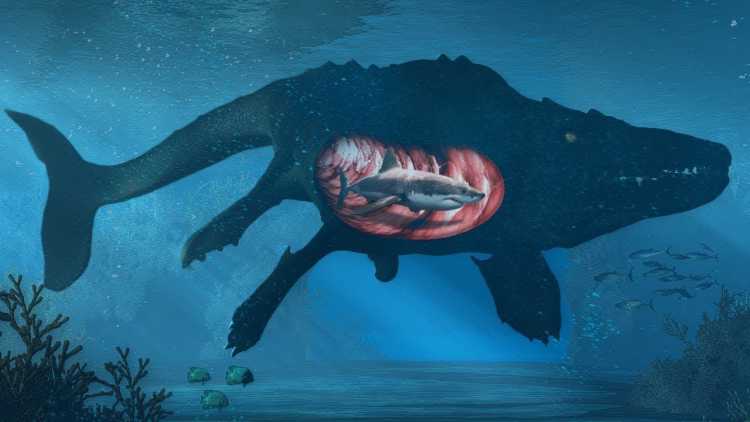





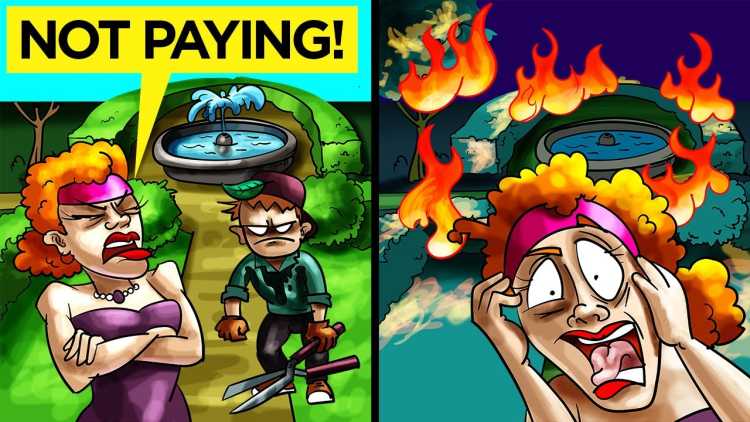
![Embarrassingly Dumb Ways People Died - Darwin Awards Winners [Part 14]](http://images.ctfassets.net/l031eph9pzsg/686De1sLP59fCNWLkbDwm5/4031ad820164610867ececf9513ce5ce/embarrassingly-dumb-ways-people-died---darwin-awards-winners-_part-14_.jpg?w=750&h=422&fl=progressive&q=50&fm=jpg)










